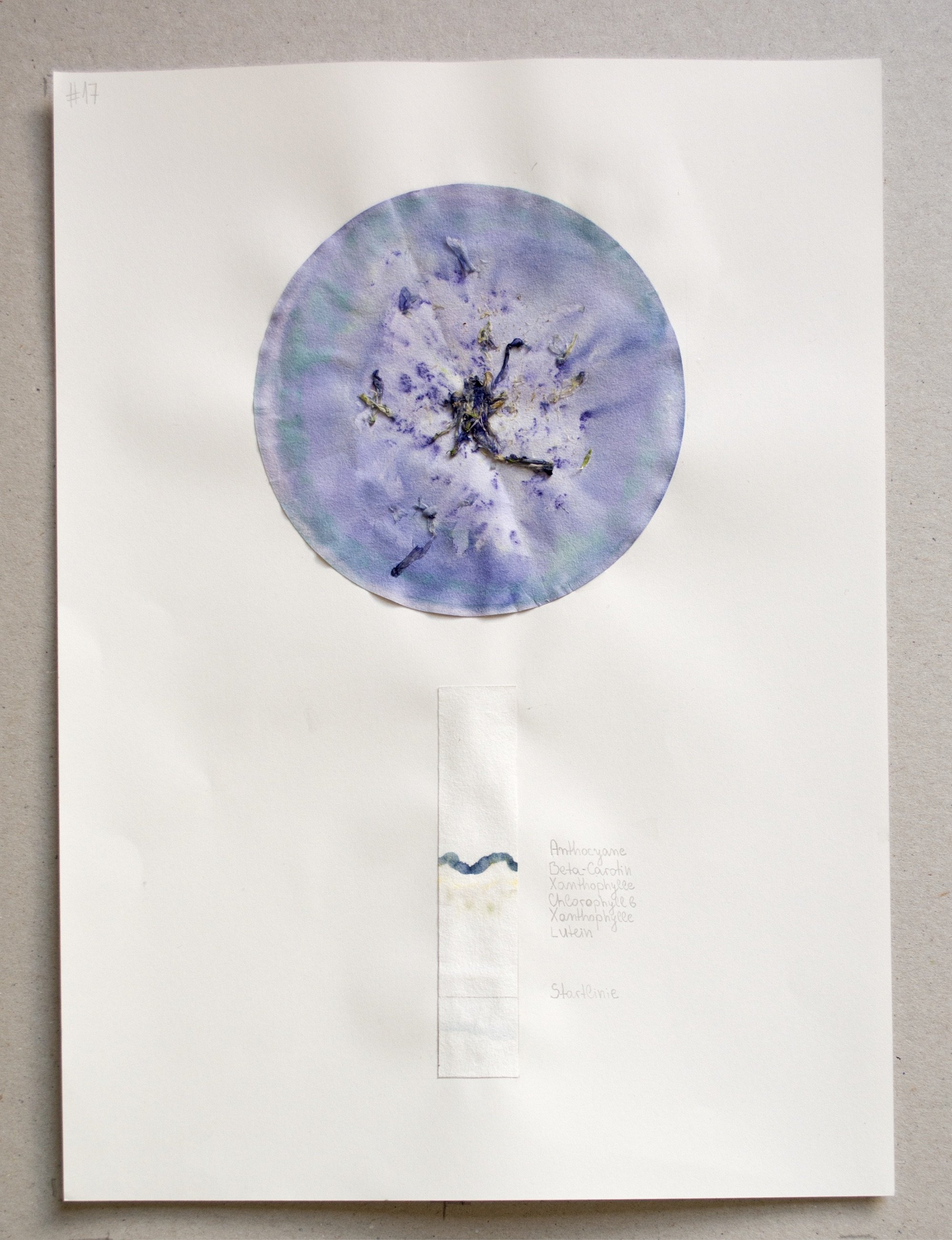The Sensing
Bodies in Conversation
Smooth, supple, warm, red root in a sun scorched landscape, dark rose to brownish, odourless, anticipation.
How does Earth sense itself through colour?
Colour communicates with us and has always been a mute witness to many histories of ‘contamination’ as Anna Tsing understands contamination: ‘transformation through encounter’ (Tsing: 27-29). Red algae speak of exhaustion from overexposure to UV-light, black feathers of carbon polluted environments, red-tinted hands in Bayer’s ‘Rote Fabrik’ spoke of toxicity, despair, and exploitation of labour. These expressive material properties come in aromas, saturations, velocities, mixtures, sensations, temporalities, and transformations. Most of them we first notice with our nose, hands, taste, and eyes. That we forgot how to read these signs is partly a testament for our separation from so called first and second nature. To attune to these tints, despite the artificial backdrop of synthetic colour, is to engage with all five senses simultaneously. ~SENSING EARTH COLOUR~ is an attempt to (re-)activate those sensitivities in order to equip us with a capacity to perceive and reflect sensations deriving from colour shifts especially caused by the Anthropocene, and ultimately to be able to generate meaning of them. Moving in a world of digitally rendered and industrially produced as well as local, organic and expressive colouring agents, the sphere of colour becomes a means in which the notion of repair of the relationship to non-human agents and their surroundings is put in focus.
#Chromatography
Chromatography is a simple DIY process which allows us to identify the pigments present in plant leaves, petals or roots. The levels of respective pigments present give us clues about the condition of their environments since they have the potential to signal environmental change. The Chromatographies made with the plants of our dye garden show different contents of Flavonoids like Anthocyanines or Luteines, Carotines and Chlorophylls.
#Anthocyanin
The purple pigment Anthocyanin is the one responsible for the spectacular display of purples in plants and vegetables. Here, we keep in mind that the pigment builds up to protect the photosynthetic apparatus of the plant. This process of protection was long considered a huge waste of the plants’ resources until scientists discovered its many beneficial roles (Cf. Gould: 314). Anthocyanin as pigment in the organism is highly adaptable. Its stability is dependent on a wide variety of factors such as light, temperature, pH, metal ions, enzymes, oxygen, and antioxidants. Already the smallest change in its environment or health of the plant affects the tint of the notoriously unstable Anthocyanin11 (Cf. Turturicā et al.: 12-13) and produces magentas, crimsons or mauves. As paint it was employed especially in medieval times for the modelling of flesh tints or landscapes in paintings, as well as the decoration of precious manuscripts. Anthocyanin changes over time. When applied, its appearances change with ph-value, so it offers beautiful varieties in hues and shades of colour.
#Colour Walks
Our proposition of the Colour Walk hopes to foster an understanding of the complexity of colour palette and possibilities of our surrounding - an exercise in noticing and becoming aware. We just go out and start looking. Moving with our bodies in space is a means for us to activate all five senses in order to be capable of noticing modifications. The inherently spacio-temporal notion of these movements makes us understand that colour as a phenomenon exists beyond language, a chain of transmissions of chemicals unfolding in pasts, presents and futures.






















